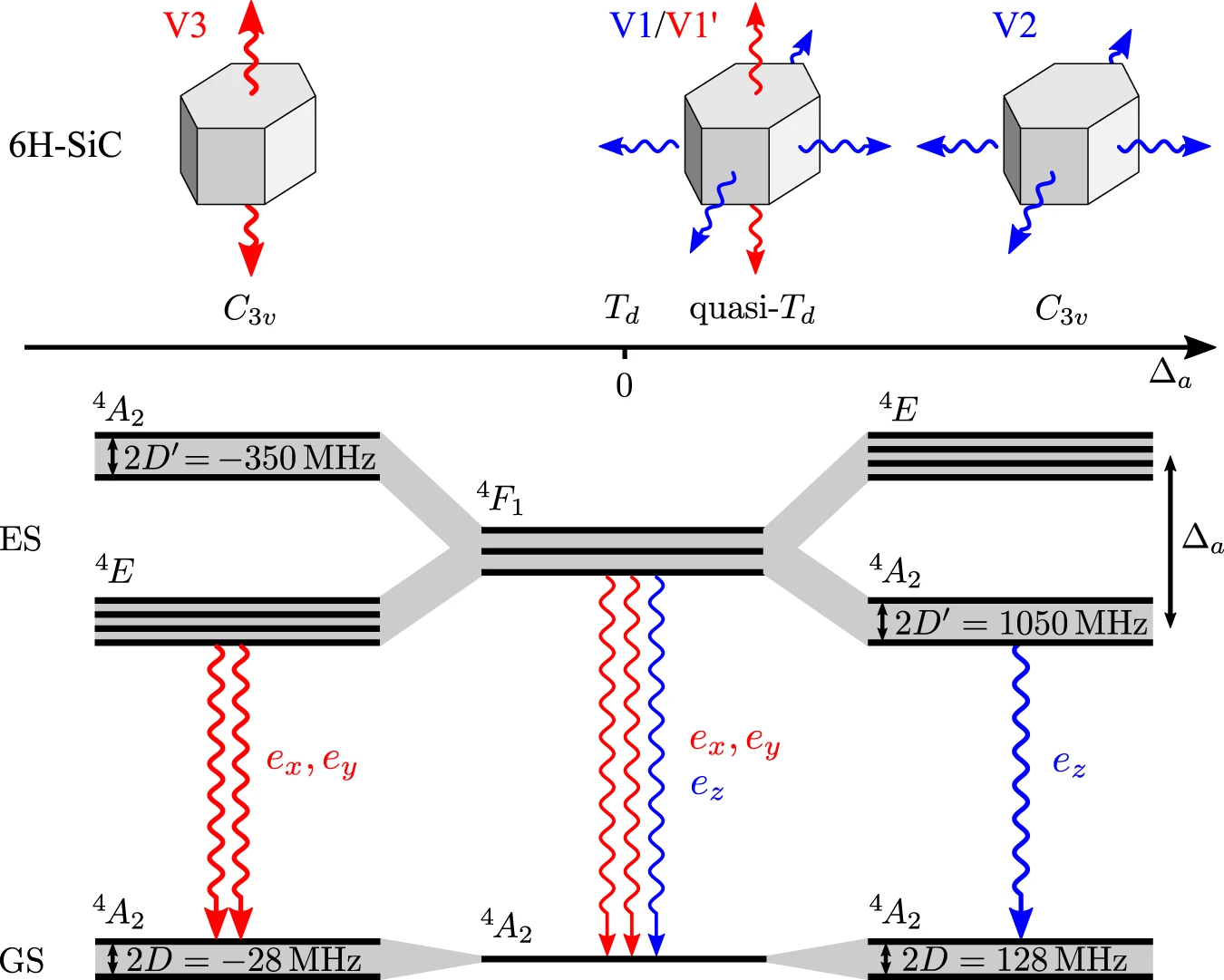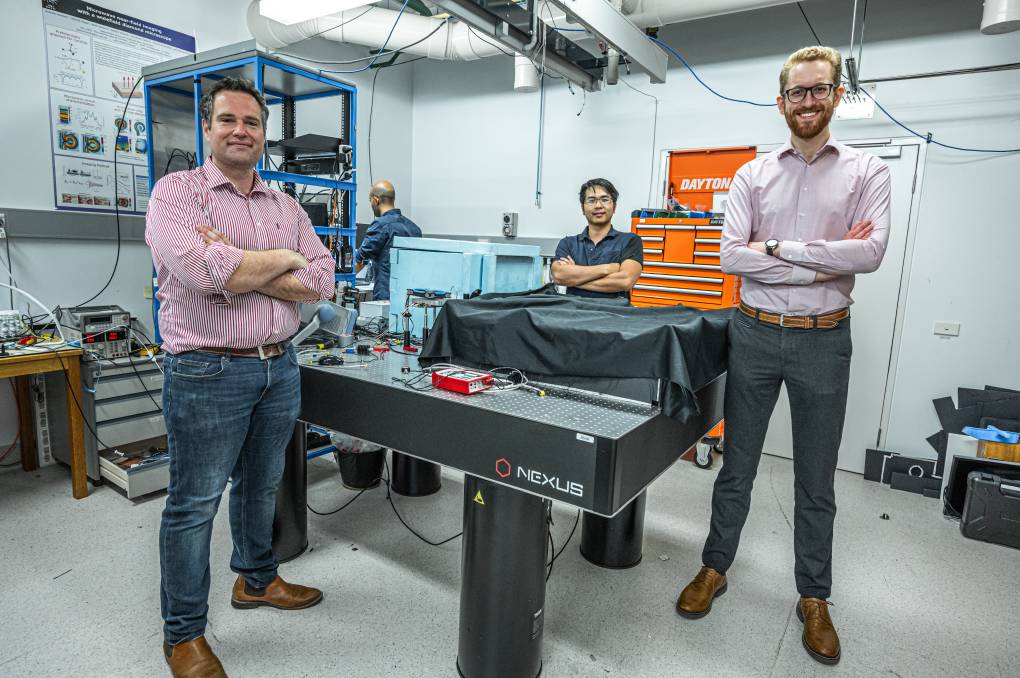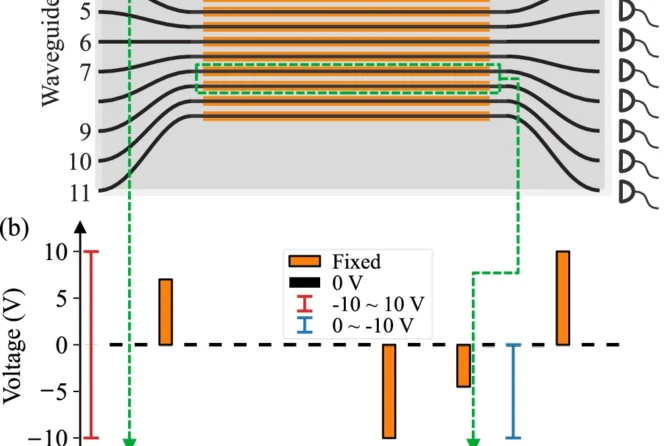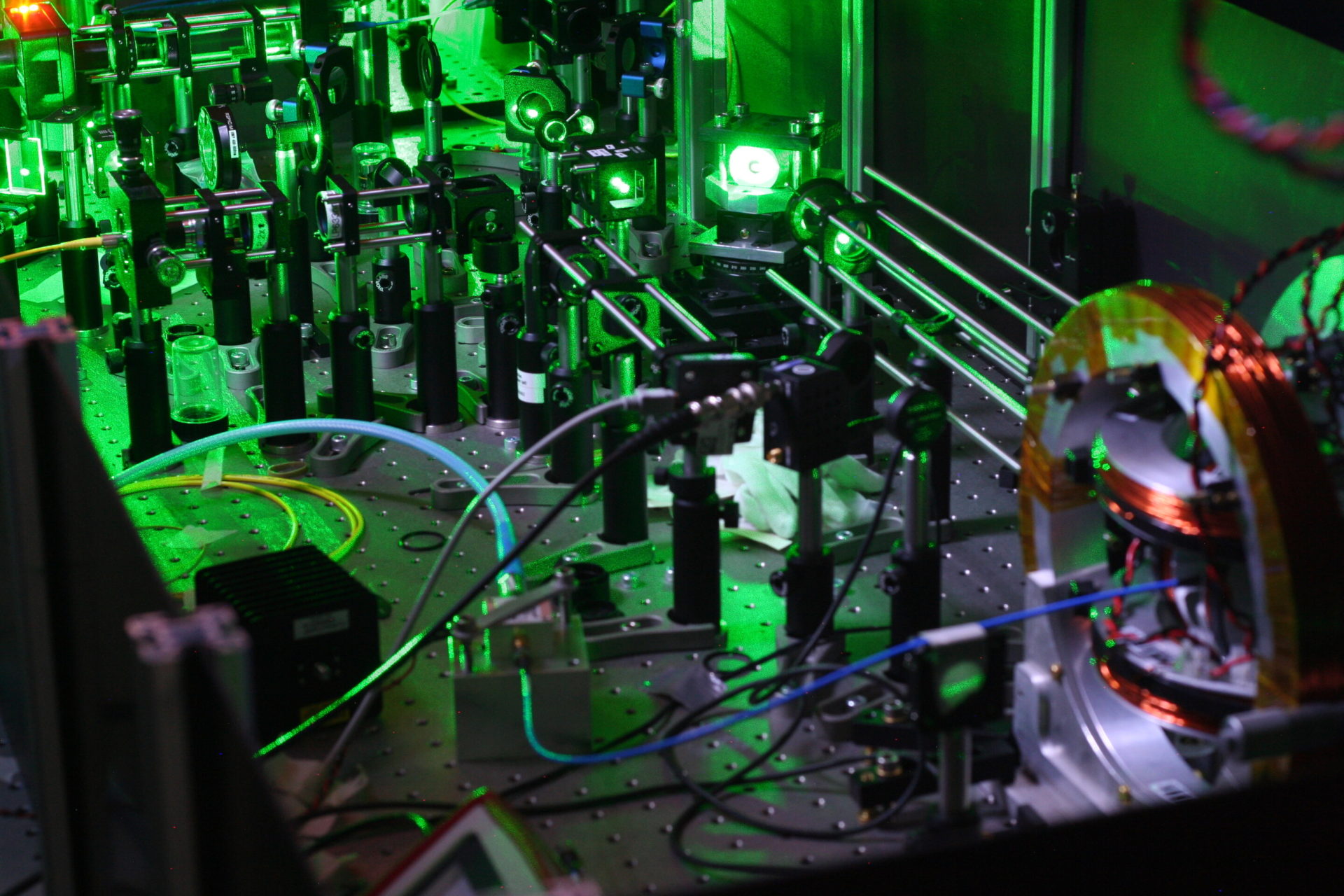Controllable solid-state spin qubits are currently becoming useful building blocks for applied quantum technologies.
A team of researchers has demonstrated that in a specific type of silicon-vacancy in the 6H-SiC polytype the excited-state fine structure is inverted, compared to 4H-SiC.
From the angular polarization dependencies of the emission, they reconstructed the spatial symmetry and determined the optical selection rules depending on the local deformation and spin–orbit interaction.
They showed that this system is well suited for the implementation of robust spin–photon entanglement schemes.
Furthermore, the inverted fine structure leads to unexpected behavior of the spin readout contrast. It vanishes and recovers with lattice cooling due to two competing optical spin pumping mechanisms.
These experimental and theoretical approaches provide a deep insight into the optical and spin properties of atomic-scale qubits in SiC required for quantum communication and distributed quantum information processing.
npj Quantum Information, Published online: 03 March 2022; doi:10.1038/s41534-022-00534-2




